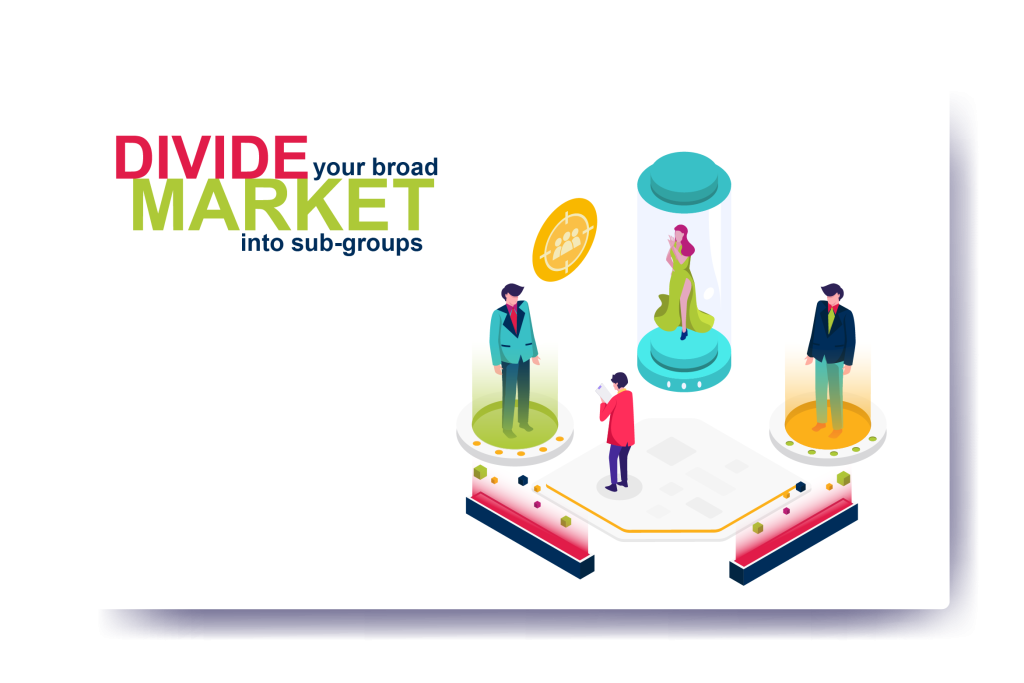Why understanding your target market is essential
Thanks to the internet there are now countless options available to consumers, and companies must find ways to stand out and engage with their audience. But if you don’t know who your product or service is aimed at and what their needs are, how are you going to convince them to buy from you as opposed to your competitors? The more clearly you define your target market, the better you can understand how to connect with your ideal potential customers. Other benefits include:
- Enhanced customer satisfaction: By understanding what your customers want and what their challenges or pain points are, you can tailor your products or services to meet their needs, resulting in higher satisfaction and hopefully repeat business.
- More cost-effective marketing: When you know who your target market is, you can focus your marketing efforts and budget on reaching the right people, on the right channels with the right message rather than wasting your money on a scattergun approach.
- Increased sales and revenue: Understanding your target market allows you to create more compelling offers and promotions, leading to higher conversion rates and increased sales.
- Brand loyalty: Businesses that understand and cater to their customers’ needs build stronger relationships and brand loyalty, leading to repeat business and word-of-mouth referrals.
Segmentation: The key to understanding your market
Market segmentation involves dividing a broad consumer or business market into sub-groups of customers based on common characteristics
This allows businesses to target these segments more effectively, catering to their specific needs and preferences. You might also discover that you have two or three key sectors, which drive 80% of your sales, which you should prioritise.
The benefits of segmenting your target market include:
- Personalised marketing: Segmentation allows for more personalised marketing strategies, which are more likely to resonate with individual segments of your audience.
- Efficient use of resources: You can focus your time and money on the key segments which generate the most income for your business, ensuring a better ROI.
- Better customer insights: Segmentation provides deeper insights into customer behaviour, preferences and needs, helping businesses to innovate and improve their product or service.
- Competitive advantage: Understanding and targeting specific market segments can provide a competitive advantage, helping businesses to stand out in a crowded market.

Example of successful market understanding and segmentation
We can all think of businesses that demonstrate a deep understanding of their target market and have used segmentation to drive success.
Nike for example segments its market based on factors such as demographics, psychographics, and behaviour. This approach has allowed Nike to develop targeted marketing campaigns and product lines that resonate with specific customer segments. These include:
- Sports enthusiasts: Nike targets this segment with performance-orientated products, emphasising innovation and technology that help improve your performance.
- Fashion-conscious consumers: Nike’s collaborations with designers and celebrities, along with its fashionable leisurewear lines, appeal to fashion-conscious consumers who prioritise looking good.
- Health and fitness enthusiasts: Nike’s marketing campaigns often promote a healthy, active lifestyle, targeting consumers who prioritise fitness and wellbeing.

Understanding Your Target Market: A Step-by-Step Guide
As businesses change over time, a marketing strategy should be flexible and be revised every six to 12 months.
Step 1: Define your market
The first step in understanding your target market is to define it clearly. This involves identifying the broad market your business operates in and understanding the overall landscape. Questions you should be asking to help you define your market include:
- What industry are you in?
- Who are your competitors?
- What are the key trends and challenges in your industry?
- What are my customers’ ‘pain points’ and how does my product or service solve them?
Step 2: Conduct market research
It’s no good going on a hunch. Market research and real-world data are fundamental to understanding your target market. You need to go after the people who want to buy from you, even if they’re not the customers you originally set out to reach. There are lots of ways of doing this, including:
- Surveys and questionnaires: These can help you gather quantitative data about customer preferences, behaviours, and demographics.
- Focus groups: Focus groups provide qualitative insights, allowing you to explore customer attitudes and perceptions in more depth.
- Interviews: One-on-one interviews can offer detailed insights into individual customer experiences and needs.
- Market analysis: Analysing market data and trends can help you understand the broader context in which your business operates. Websites like yougov.co.uk are a great source of consumer data.
Step 3: Identify key segments
Once you have gathered sufficient data, the next step is to identify key segments within your target market. There are several ways to segment a market, including:
- Demographic: Based on factors such as age, gender, income, education, and occupation.
- Geographic: Based on location, such as country, region, city, or neighbourhood.
- Psychographic: Based on lifestyle, values, interests, and attitudes.
- Behavioural: Based on behaviour patterns, such as purchase behaviour, usage rate, and brand loyalty.
Step 4: Develop customer personas
Creating detailed customer personas for each segment can give you a more detailed understanding of your target market. It’s a fictional representation of your ideal customer, based on real-world data and insights. Each persona should include the customer’s demographic, psychographic and behavioural information (as outlined above) as well as their goals and challenges. What are their primary goals and challenges related to your product or service, and how does your business address them? Some people even give their customer personas real names to help bring them to life in their employees’ minds.
Step 5: Tailor your marketing strategies
With your customer personas in place, you can develop your marketing strategy to each segment. This involves creating targeted marketing messages, choosing the right channels, and designing personalised campaigns. Here are just some of the ways developing customer personas can improve your marketing:
- Content marketing: Develop content that addresses the specific needs and interests of each segment, such as blog posts, videos, infographics and white papers.
- Social media marketing: Use social media platforms to engage with different segments and tailor your content to their preferences, eg memes on TikTok.
- Email marketing: Create segmented email lists and design personalised email campaigns that resonate with each segment.
- Digital advertising: Use targeted advertising options on platforms like Google and Meta to reach specific segments with relevant ads.
Step 6: Monitor and adjust
Understanding your target market is an ongoing process. It’s essential to monitor the performance of your marketing strategies and adjust based on feedback and results. Here are some ways to do this:
- Analytics: Use analytics tools to track key metrics, such as website traffic, conversion rates and customer engagement.
- Customer feedback: Regularly collect and analyse customer feedback to understand their experiences and identify areas for improvement.
- Market Trends: Stay updated on market trends and adjust your strategies to remain relevant and competitive.

The impact of effective segmentation on business success
When businesses effectively understand and segment their target market, the impact can be game-changing. You can expect to see benefits including:
- Increased customer acquisition
By targeting specific segments with tailored marketing messages, businesses can attract more potential customers who are genuinely interested in their products or services. This leads to higher conversion rates and increased customer acquisition.
- Enhanced customer retention: Understanding your target market allows you to meet their needs more effectively, resulting in higher customer satisfaction and loyalty. Satisfied customers are more likely to return and make repeat purchases.
- Improved marketing ROI: Segmenting your market will enable you to spend your time and budget on the most promising segments. This leads to better returns on investment (ROI) for your marketing campaigns, maximising the impact of your efforts.
- Competitive advantage: Businesses that understand and cater to their target market gain a competitive advantage. They can differentiate themselves from competitors by offering unique value propositions that resonate with specific customer segments.
- Innovation and growth: Insights gained from understanding your target market can drive innovation, helping you develop new products or services that meet emerging needs and preferences. This will ensure business growth and secure your position as an industry leader.
Understanding your target market and effectively segmenting it is not just a marketing strategy; it’s fundamental to success. By investing time and effort into comprehensively understanding your audience, you can create more compelling offers, improve customer satisfaction and achieve higher levels of growth and profitability. Real-world examples like Nike illustrate the power of market understanding and segmentation in building successful, customer-centric businesses.
At Shooting Star, we specialise in helping businesses like yours navigate the complexities of targeting and segmentation. Our tailored PR and marketing strategies are designed to help you engage with your target audience, driving business success and growth. Contact us today to learn more about how we can support your business in achieving its goals.
Article created on July 10, 2024










